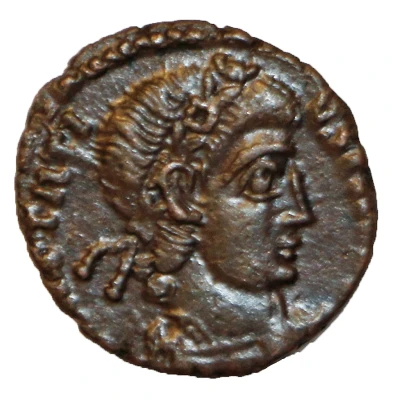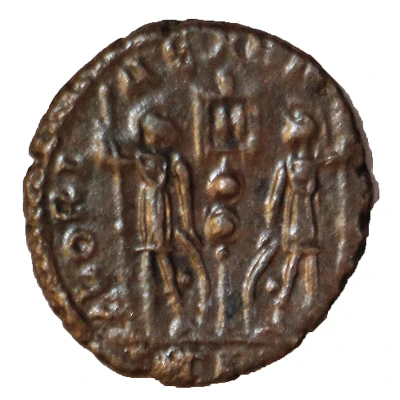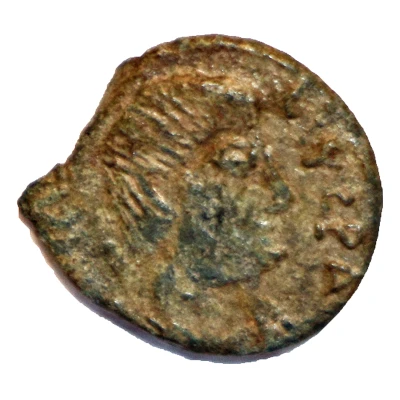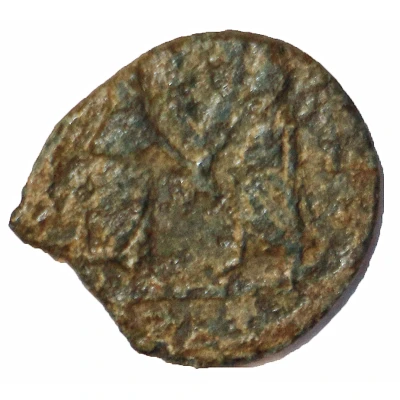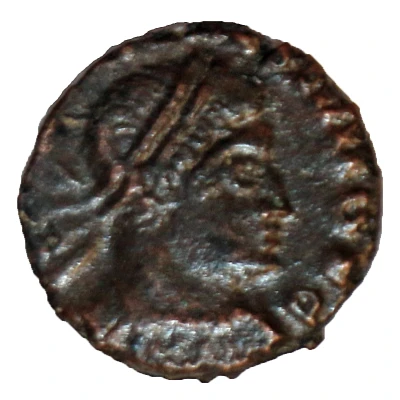
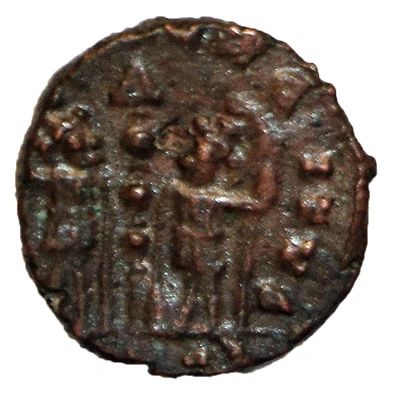

Follis - Constantinus II GLORIA EXERCITVS; Barbarous imitation
| Bronze | 0.8 g | 11 mm |
| Issuer | Uncertain barbarous city (Rome) |
|---|---|
| Type | Standard circulation coin |
| Years | 337-349 |
| Value | Follis (1) |
| Composition | Bronze |
| Weight | 0.8 g |
| Diameter | 11 mm |
| Shape | Round (irregular) |
| Technique | Hammered |
| Orientation | Variable alignment ↺ |
| Demonetized | Yes |
| Updated | 2024-10-04 |
| Numista | N#274070 |
|---|---|
| Rarity index | 94% |
Reverse
Two soldiers, each holding a spear, between them one labarum (imperial standard of Constantine the Great, which bore Christian imagery and Roman military symbols)
Script: Latin
Lettering: GLORIA EXERCITVS
Translation: Glory to the Army
Comment
Imitating Trier mint (mintmark TRS), but struck in Britain. Along with similar high-quality imitations of VRBS ROMA and CONSTANTINOPOLIS, they might have been semi-official, struck because of the coin shortageInteresting fact
One interesting fact about this coin is that it is a barbarous imitation of a legitimate Roman coin, meaning it was created by a non-Roman entity or individual and was not officially sanctioned by the Roman government. Despite this, it still features the image of Constantinus II and the inscription "GLORIA EXERCITVS," indicating that it was intended to pass as a genuine Roman coin. This highlights the fact that counterfeiting and imitation coins were a common occurrence in the ancient world, and that the production and distribution of coins were not always tightly controlled by centralized authorities.
